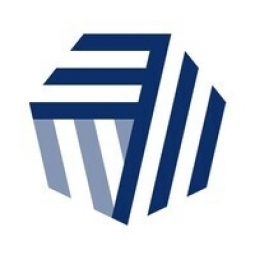Technology Category
- Functional Applications - Enterprise Resource Planning Systems (ERP)
- Functional Applications - Inventory Management Systems
Applicable Industries
- Apparel
- Retail
Applicable Functions
- Sales & Marketing
- Warehouse & Inventory Management
Use Cases
- Inventory Management
- Retail Store Automation
Services
- System Integration
About The Customer
Cath Kidston is a well-known fashion retailer, famous for its extensive product line of nostalgic, hand-painted floral print fashion, bags, kids wear, and home furnishings. The company was founded by fashion designer Cath Kidston and is headquartered in London. It started with a single retail store in 1993 and grew to 136 retail outlets worldwide by 2014. The company sells vintage and British-influenced fashion apparel and accessories through its own branded outlets and high-end retailers like John Lewis. In 2010, a majority stake in the company was sold to private equity investors, leading to further growth. However, the onset of the Covid-19 pandemic in 2020 forced the company to close 60 of their UK and Japanese retail locations and pivot to ecommerce.
The Challenge
Cath Kidston, a renowned fashion retailer known for its nostalgic, hand-painted floral print fashion, bags, kids wear, and home furnishings, faced a significant challenge in the wake of the Covid-19 pandemic. The company, which had grown from a single retail store in 1993 to 136 retail outlets worldwide by 2014, was forced to close 60 of their UK and Japanese retail locations in early 2020 due to commercial challenges. This situation could have spelled the end for most brick-and-mortar businesses, but Cath Kidston saw it as an opportunity for a new beginning. The company decided to relaunch the brand as a direct-to-consumer (D2C) ecommerce business while maintaining its B2B franchise and wholesale operations. However, the transition was not without its challenges. The company's existing enterprise resource planning software (ERP) was not only expensive and complex but also lacked technical documentation, making integration difficult.
The Solution
Cath Kidston turned to Cin7, an inventory and order management solution, to facilitate their transformation into a full-fledged ecommerce business. After comparing Cin7’s cloud-based feature set to competitor offerings, Cath Kidston implemented the software in April 2020. Cin7 was chosen for its powerful features to manage the company’s sales, inventory, and fulfillment, both for ecommerce and in its remaining global brick-and-mortar locations. Cin7’s wide array of over 700 built-in integrations to other applications specific to retail and fulfillment were instrumental in Cath Kidston’s remarkable transformation. The move to Cin7 allowed Cath Kidston to do cross-channel stock reconciliations, ensuring consistent inventory count across retail, wholesale, and online outlets. It also enabled them to connect to their main fulfillment warehouses in the UK and Hong Kong, providing true end-to-end visibility. Moreover, Cin7 provided a trustworthy source of inventory truth, a feature lacking in their previous ERP software.
Operational Impact
Quantitative Benefit

Case Study missing?
Start adding your own!
Register with your work email and create a new case study profile for your business.
Related Case Studies.

Case Study
Fire Alarm System and Remote Monitoring Sytem
Fire alarm systems are essential in providing an early warning in the event of fire. They help to save lives and protect property whilst also fulfilling the needs of insurance companies and government departments.Fire alarm systems typically consist of several inter-linked components, such as smoke detectors, heat detector, carbon monoxide, manual call points, sounders, alarm and buzzer. The fire alarm system should give immediate information in order to prevent the fire spread and protect live and property.To get maximum protection a shoe manufacturer in Indonesia opted for a new fire alarm system to monitor 13 production sites spread over 160 hectars. Although the company had an existing fire alarm system, it could not be monitored remotely.It was essential that the new system would be able to be monitored from a central control room. It needed to be able to connect to the existing smoke detector and manual call point. Information should be easily collected and passed on to the Supervisory Control and Data Acquisition (SCADA) system. Furthermore, the system should have several features such as alarm management, auto reporting, being connected to many client computers without additional cost, and run 24/7 without fails. The company also needed a system which could be implemented without changing the architecture of the existing fire alarm system.

Case Study
IoT Applications and Upgrades in Textile Plant
At any given time, the textile company’s manufacturing facility has up to 2,000 textile carts in use. These carts are pushed from room to room, carrying materials or semi-finished products. Previously, a paper with a hand-written description was attached to each cart. This traditional method of processing made product tracking extremely difficult. Additionally, making sure that every cart of materials or semi-finished products went to its correct processing work station was also a problem. Therefore, the company desired an intelligent solution for tracking assets at their factories. They also wanted a solution that would help them collect process data so they could improve their manufacturing efficiency.

Case Study
Improving Production Line Efficiency with Ethernet Micro RTU Controller
Moxa was asked to provide a connectivity solution for one of the world's leading cosmetics companies. This multinational corporation, with retail presence in 130 countries, 23 global braches, and over 66,000 employees, sought to improve the efficiency of their production process by migrating from manual monitoring to an automatic productivity monitoring system. The production line was being monitored by ABB Real-TPI, a factory information system that offers data collection and analysis to improve plant efficiency. Due to software limitations, the customer needed an OPC server and a corresponding I/O solution to collect data from additional sensor devices for the Real-TPI system. The goal is to enable the factory information system to more thoroughly collect data from every corner of the production line. This will improve its ability to measure Overall Equipment Effectiveness (OEE) and translate into increased production efficiencies. System Requirements • Instant status updates while still consuming minimal bandwidth to relieve strain on limited factory networks • Interoperable with ABB Real-TPI • Small form factor appropriate for deployment where space is scarce • Remote software management and configuration to simplify operations

Case Study
Digital Retail Security Solutions
Sennco wanted to help its retail customers increase sales and profits by developing an innovative alarm system as opposed to conventional connected alarms that are permanently tethered to display products. These traditional security systems were cumbersome and intrusive to the customer shopping experience. Additionally, they provided no useful data or analytics.

Case Study
How Sirqul’s IoT Platform is Crafting Carrefour’s New In-Store Experiences
Carrefour Taiwan’s goal is to be completely digital by end of 2018. Out-dated manual methods for analysis and assumptions limited Carrefour’s ability to change the customer experience and were void of real-time decision-making capabilities. Rather than relying solely on sales data, assumptions, and disparate systems, Carrefour Taiwan’s CEO led an initiative to find a connected IoT solution that could give the team the ability to make real-time changes and more informed decisions. Prior to implementing, Carrefour struggled to address their conversion rates and did not have the proper insights into the customer decision-making process nor how to make an immediate impact without losing customer confidence.








